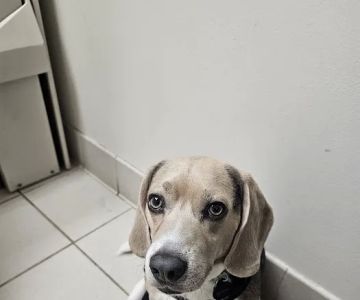How to Groom Long-Haired Cats
As a proud cat parent of a long-haired feline, I’ve learned that grooming is not just about keeping their fur pretty—it’s essential for their health and well-being. At first, grooming my long-haired cat was overwhelming, but over time, I’ve discovered techniques and tips that make the process smoother and more enjoyable. If you’re wondering how to groom long-haired cats and ensure that your furry friend’s coat remains tangle-free and healthy, I’ve got you covered. Let’s dive into everything you need to know!
1. Understanding the Importance of Grooming
Before we get into the specifics of grooming, it’s crucial to understand why it’s so important for long-haired cats. Long-haired breeds, such as Persians, Maine Coons, and Ragdolls, are more prone to matting and tangling, which can lead to skin irritation, infections, and discomfort. Regular grooming not only prevents these issues but also keeps your cat’s fur shiny, soft, and free of loose hairs.

2523 South Blvd, Charlotte, NC 28203, USA
See Details1.1 Preventing Mats and Tangles
One of the biggest challenges with long-haired cats is managing their mats and tangles. Without regular grooming, mats can form quickly, especially in areas like behind the ears, under the legs, and around the tail. These mats not only look unsightly but can also cause discomfort and even skin damage. By brushing your cat frequently, you’ll keep the fur tangle-free and prevent any painful knots from forming.
1.2 Reducing Hairballs
Another benefit of grooming is the reduction of hairballs. Long-haired cats tend to shed more than their short-haired counterparts, and without grooming, they end up ingesting more of their loose fur when they lick themselves. This can lead to hairballs, which are not only messy but can cause digestive issues. Regular brushing removes excess fur, preventing hairballs and ensuring your cat feels comfortable.
2. The Tools You’ll Need for Grooming
When I first started grooming my long-haired cat, I was unsure of what tools I needed. Fortunately, I quickly realized that having the right tools made the entire process easier. Here’s a list of grooming essentials that I always keep on hand:
2.1 Wide-Tooth Comb
A wide-tooth comb is perfect for gently detangling your cat’s fur. I use it to go through my cat’s coat first to get rid of any small tangles before using a finer comb. The wide teeth help avoid pulling on the fur, which could hurt your cat. Start from the tips and work your way up to avoid causing discomfort.
2.2 Slicker Brush
The slicker brush is another must-have in my grooming toolkit. It’s designed to remove mats and tangles without hurting your cat’s skin. I find it especially useful for removing any loose hairs and preventing new mats from forming. Gently brush in the direction of the fur growth, and be extra cautious around sensitive areas like the belly and underarms.
2.3 De-matting Tool
If your cat already has a few mats in its fur, a de-matting tool can be a real lifesaver. These tools help break up mats without causing pain. I personally use a de-matting rake for stubborn mats, working gently through them to avoid tugging on the skin. Patience is key when using this tool, so take your time to work through the mats gradually.
3. Step-by-Step Grooming Process
Now that you have the right tools, let’s go over the step-by-step grooming process. It’s important to make the grooming experience as enjoyable as possible for both you and your cat. Here’s how I’ve found it best to approach it:
3.1 Start with Gentle Brushing
Before you do anything, make sure your cat is calm and relaxed. I like to start by petting my cat and getting it used to the idea of being touched. Then, I begin with the wide-tooth comb to gently remove any loose hair and tangles. I always make sure to work slowly and softly, paying attention to any areas that seem more tangled than others. The goal is to make it a peaceful and soothing experience for both of us.
3.2 Work Through the Mats
Next, I focus on any mats that may have formed. I carefully use the de-matting tool or a slicker brush to break up the mats. I find that spraying a little detangler solution helps loosen the mats and makes it easier to work through them. If the mats are particularly bad, I might have to trim a small section of fur, but I always make sure to leave enough hair to keep my cat comfortable and warm.
3.3 Regular Brushing Sessions
Regular brushing is key to maintaining a long-haired cat’s coat. I’ve made it a routine to brush my cat at least two to three times a week, depending on the season and how much shedding is occurring. During shedding seasons, such as spring and fall, you might need to brush more frequently to keep your cat’s coat in top condition.
4. Bathing Your Long-Haired Cat
Bathing your long-haired cat is not always necessary, but it can be beneficial if your cat’s coat is looking dull or dirty. Some cats actually enjoy water, but others may not be too fond of it. If you’re planning to give your cat a bath, make sure you use a cat-safe shampoo and conditioner. I recommend using a gentle, moisturizing shampoo that won’t strip the natural oils from your cat’s skin. Always make sure to rinse thoroughly to avoid any residue left in the fur.
4.1 Drying and Brushing After the Bath
After the bath, it’s important to dry your cat thoroughly. Use a towel to gently pat away excess water. If your cat tolerates it, you can use a hairdryer on a low, cool setting. Be sure to brush the coat while it’s drying to prevent any tangles from forming.
5. Tips for Maintaining a Healthy Coat
In addition to grooming, there are a few other things I do to keep my long-haired cat’s coat healthy. Regular vet visits are important to ensure there are no underlying skin issues. I also make sure my cat has a well-balanced diet to promote healthy skin and fur. Omega-3 fatty acids, found in fish oil, can be especially helpful for improving coat quality. I’ve noticed a significant difference in my cat’s coat since adding fish oil to its diet.
5.1 Hydration for Healthy Fur
Don’t forget the importance of hydration! A well-hydrated cat will have healthier skin and fur. I always make sure my cat has access to fresh water, and I sometimes even add a little wet food to its diet to ensure it stays hydrated.










